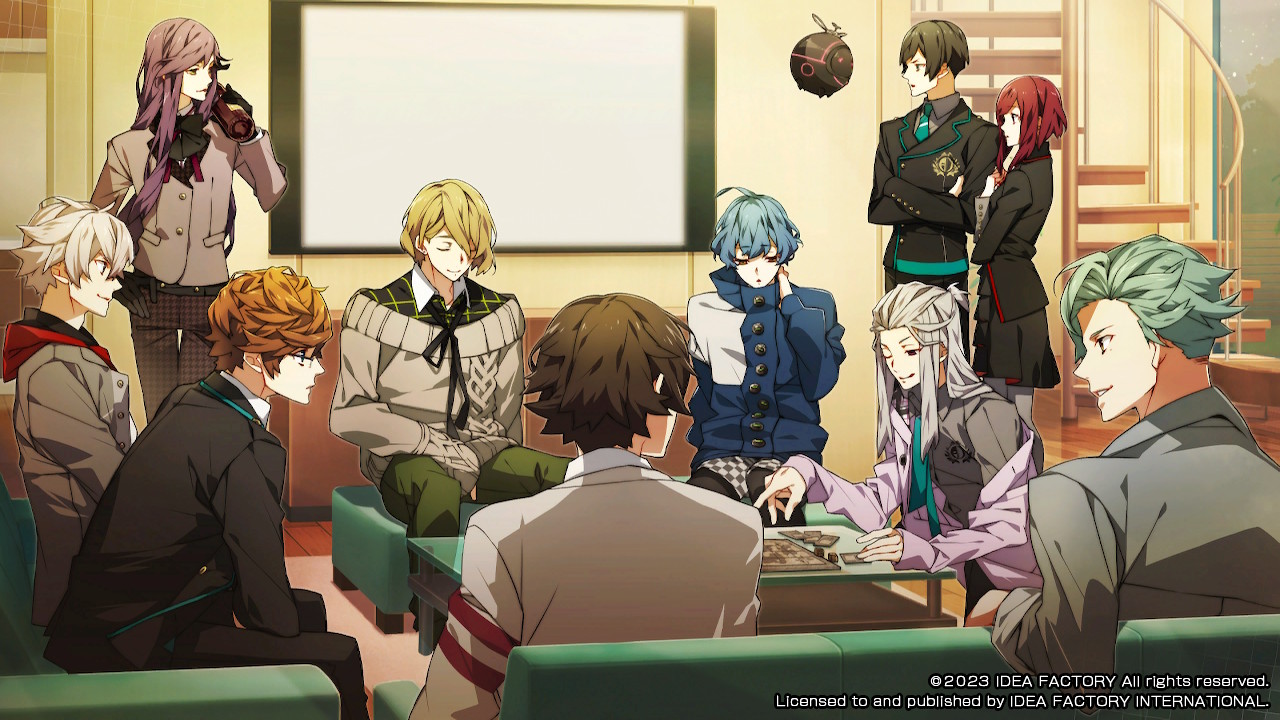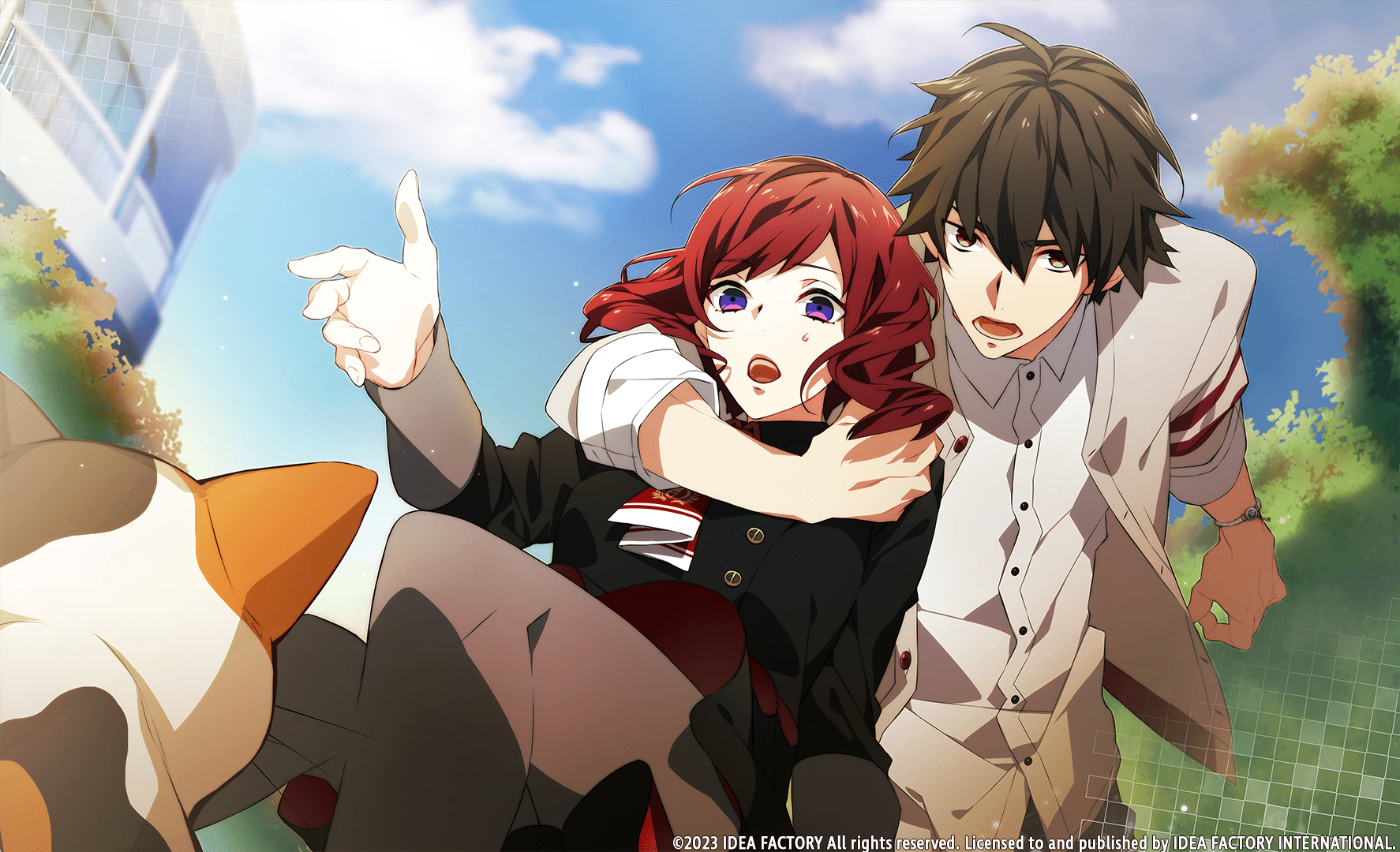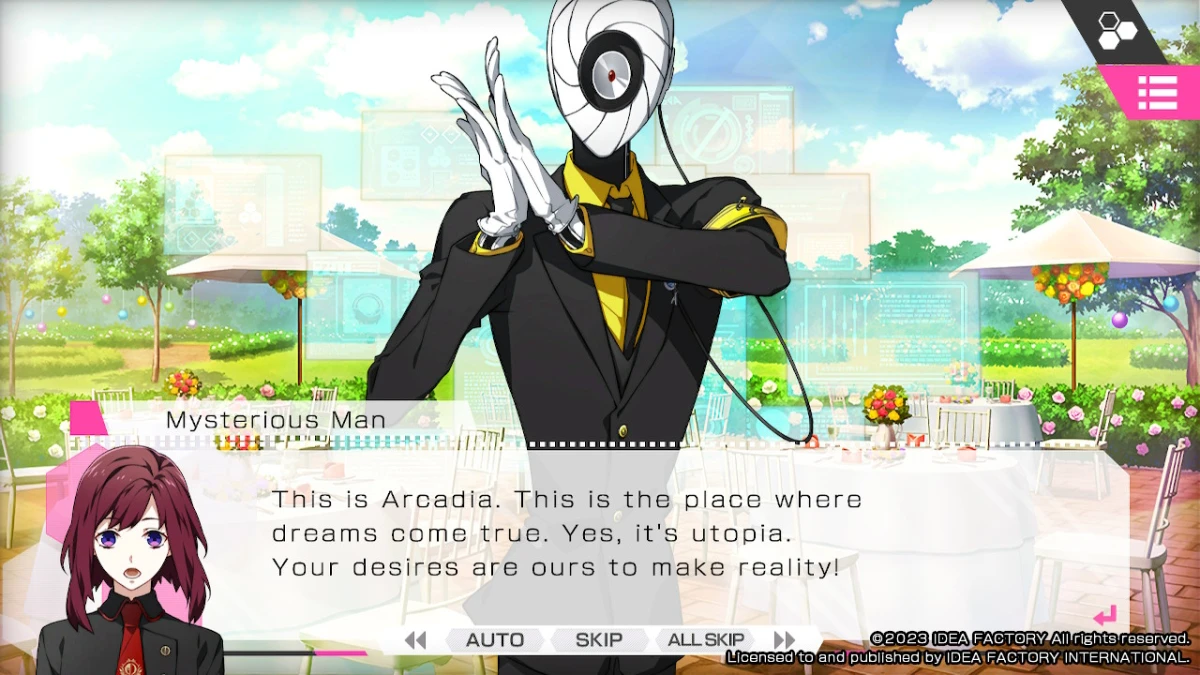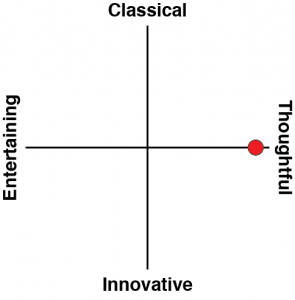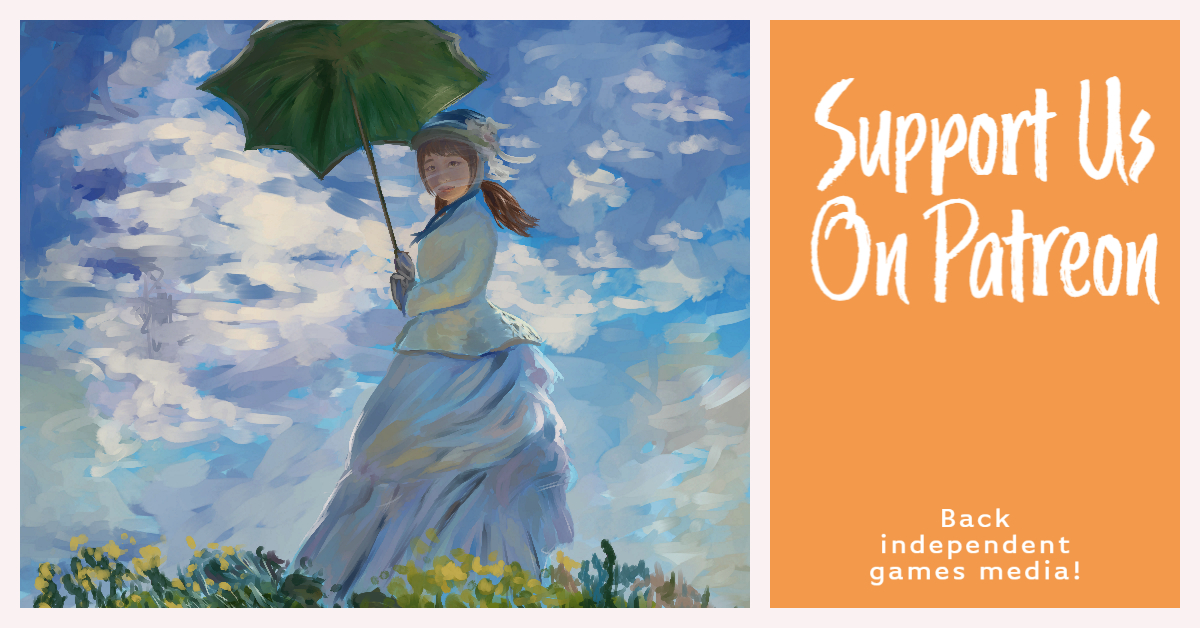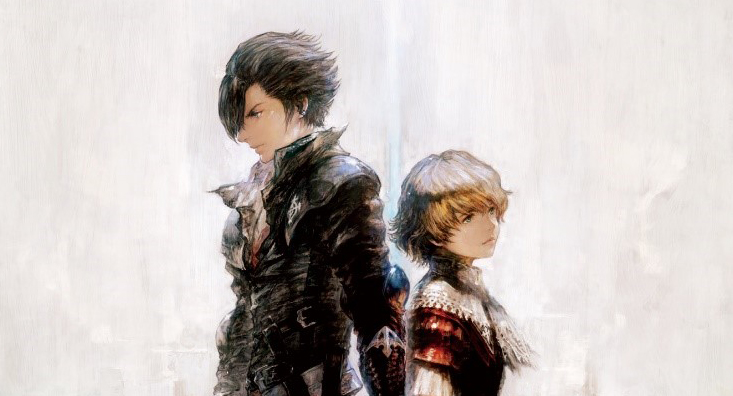What happens when you blend the otome visual novel sub-genre with death games like Danganronpa or Squid Games? Essentially, you get Charade Maniacs. This is Idea Factory’s latest to make its way out west and it’s an intriguing and eclectic thing. I don’t know if this particular fusion of ideas worked, but I enjoyed my time with it nonetheless, because so much of it is, in isolation, so good.
The narrative takes place far into the future, in a tech-driven science fiction world where we’re immediately led to believe is not precisely a utopia. Still, things seem relatively normal for our main girl, Hiyori Sena. She’s a high schooler that is grappling with feelings for her best guy friend and there are all the usual school dramas surrounding them. But then something weird happens; Hiyori gets knocked out by a very strange someone and, when she awakes, she and a bunch of guys (and one other character that is initially ambiguous) discover they’ve been kidnapped and trapped in some kind of alternative world.
Here they’re forced to perform little dramas for the sake of some unknowable audience out there, and any that fail or refuse to participate are… disappeared. The challenges get harder and more dangerous and, what’s worse, one of the group is a mole and plant by the “producer” that imprisoned them all. And so Hiyori and her reverse harem are forced to go through the motions of these performances while also trying to figure out who is trying to betray them. Finally, as they do that, they’re also searching for some kind of escape from their predicament.
The single biggest issue that I have with Charade Maniacs is the simple fact that I don’t necessarily think the death game goes so well with otome. Otome can be so many things. It can be a historical drama. It can be a violent take on mafia culture. It can be a biting satire. It can be a noirish mystery, and it can be incredibly dark. But despite that versatility, I’m not sure a death game quite works for it. The juxtaposition between the personal drama and relationship building between the characters, and the play on the Prisoner’s Dilemma and the need to depict some horrible dangers and the consequence to those that fail at the high stakes, comes across as a clash rather than a mutually beneficial marriage of styles.
Individually both the genres at play in Charade Maniacs work and are intriguing and compelling. Having a group of characters kidnapped and forced to act out dramas for a fickle and capricious audience is excellent commentary material, especially as society continues to circle down the drain for both attention spans and interest in the quality of the content we consume. Meanwhile, in a game of deepening bonds and romance, Hiyori is a sweetheart and almost all the boys are the kind that you hope she’ll hook up with. The reverse harem’s a big one this time around – nine characters in the ensemble – and each of them is given enough time to develop a personality that you’ll have feelings on one way or another. You’re almost certain to dislike some of the characters, but the others are going to come across as handsome on the inside as the out. That’s the good. Sadly while both of these genres would have worked remarkably well on their own, when smashed together the result is… inelegant. I spent most of my time playing through it wishing that it was possible to surgically separate the two so I could enjoy them on their own merits.
I also found the presentation a little lacking, and for an unusual reason by Idea Factory’s lofty standards. Typically I find the in-story character models and backgrounds to be nicely detailed, but not necessarily stand-out special, and the CGs to be breathtaking. This approach works for the visual genre, because it makes the CGs the “reward” for playing through the game. Charade Maniacs does things around the other way. The in-game character models, backgrounds and general UI are all gorgeous and filled with personality. The CGs themselves, meanwhile, are surprisingly underwhelming and uninspired. Odd decisions for framing and a lack of emotional intensity for the scene meant that with too many of them, it seemed like the illustrator was interested in capturing the most mundane rather than dramatic moments. I wasn’t actively looking forward to them as I normally do. They’re by no means ugly. They’re just not the kind of thing you’ll wish you could print out and stick on a canvas.
One other issue Charade Maniacs has going against it is the perception that you’re not actively in control of things. When you think about other death game VNs, or VNs that have high stakes at least – things like Danganronpa, Death Mark, and Gnosia – the perception of player agency is critical in getting you invested in the plight. It doesn’t necessarily matter whether you really do have that agency – Danganronpa is almost shockingly linear and limited when you actually look at what you actually do in the game – but the perception matters for everything.
Charade Mechanics feels like you don’t have much control over anything, and therefore it’s hard to get too invested in the decisions that the characters do make. You’ve actually got more control than Danganronpa (a lot more control) and there are the typical multiple routes for each boy and different endings. There’s a full decision tree you can later unlock that makes it easier to see everything, because otherwise, it would be a long slog indeed to keep playing this game over and over again to try and get to all the endings. But the perception of passive interaction, typical of otome, never goes away.
Charade Manicas is two individually brilliant games that, combined, are the lesser sum of their parts. I can see why the developers would be intrigued by the combination of the otome and death game mystery genres. I can see the commercial appeal too, given what a runaway success the death game genre continues to be. However, despite excellent production values, a great cast, and a well-written mystery, this particular combination chills rather than delights.
